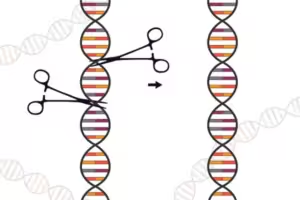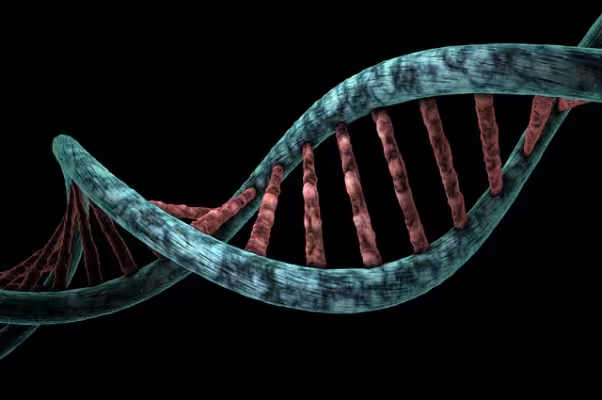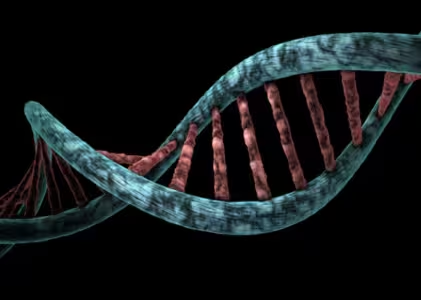Genetic Engineering – Imagine having the power to reshape life itself, to tinker with the very blueprint that defines every living organism. That’s the incredible potential of genetic engineering – a revolutionary field that allows scientists to precisely modify the genetic code of plants, animals, and even humans. It’s a concept straight out of science fiction, but one that has become a reality in labs worldwide, opening up exciting possibilities and raising profound ethical questions.
What is Genetic Engineering?
At its core, genetic engineering involves altering the DNA sequence of an organism by introducing or removing specific genes. This process can enhance desired traits, eliminate unwanted characteristics, or create entirely new ones that don’t exist in nature. It represents a profound ability to override and rewrite the instructions of life itself.
How It Works: A Molecular WHSymphony
Think of DNA as a complex musical score, with each gene representing a different instrument or melody. Genetic engineers are like skilled composers, able to rearrange, remove, or add new notes (genes) to create a harmonious genetic symphony tailored to their desires.
The process typically involves identifying the gene responsible for a particular trait, isolating it from the parent organism, and then inserting it into the DNA of the target organism using specialized techniques like recombinant DNA technology or gene editing tools like CRISPR. This allows engineers to mix and match genes from different species, creating novel combinations that would never occur in nature.
Applications: Improving Lives and Shaping the Future
The potential applications of genetic engineering are vast and far-reaching, with implications that span agriculture, medicine, environmental conservation, and even space exploration. It represents a powerful tool for addressing some of humanity’s greatest challenges.

Feeding the World
Scientists have engineered genetically modified crops to resist pests, tolerate drought conditions, and produce higher yields, thereby helping to increase food security and feed a growing global population. These crops can also be fortified with additional nutrients, improving their nutritional value.
Fighting Diseases
- Researchers are using genetic engineering to develop new treatments for genetic disorders, cancer, and other diseases by introducing therapeutic genes or modifying disease-causing ones. This includes techniques like gene therapy, which involves replacing defective genes with healthy ones.
Environmental Preservation
Scientists are exploring ways to genetically engineer organisms to help clean up pollution, restore damaged ecosystems, and combat invasive species that threaten biodiversity. For example, bacteria could be engineered to break down toxic compounds or plants engineered to absorb more carbon dioxide.
Space Exploration
NASA is investigating the use of genetic engineering to create plants and microorganisms better suited for life in space, potentially enabling long-term space travel and colonization. Engineers could create organisms that require less water, oxygen, or nutrients, making them better adapted to the harsh conditions of space.
Ethical Cares: Navigating the Delicate Balance
While the benefits of genetic engineering are undeniable, the technology also raises complex ethical and moral questions that society must grapple with. These debates touch on fundamental issues of human agency, identity, and our relationship with the natural world.

Playing God
Some argue that tampering with the fundamental building blocks of life is overstepping human boundaries and amounts to “playing God.” They contend that altering the genetic code of organisms is a violation of the natural order and could have unpredictable, catastrophic consequences.
Safety Concerns
Fears surround the potential unintended consequences of genetic modifications, which could create new allergens or toxins, disrupt delicate ecosystems, or accidentally introduce engineered genes into wild populations through cross-pollination or other means
Equity and Access
As with many cutting-edge technologies, there are concerns about the equitable distribution of the benefits of genetic engineering. There are worries that the technology could be monopolized by large corporations or wealthy nations, exacerbating global inequalities and creating new forms of discrimination or exploitation.
Regulation and Oversight
Determining the appropriate level of regulation and oversight for genetic engineering research and applications is an ongoing challenge. There are debates around issues like labelling requirements for genetically modified foods. Containment protocols for engineered organisms, and the establishment of international governance frameworks.
For those seeking a deeper understanding of the scientific and technical principles, our site offers a comprehensive exploration of Climate Change Prevention – A Comprehensive Guide For this Crisis Blockchain: Unlocking the Potential of a Revolutionary Technology Robotics: Our Mechanical Companions in the Journey of Life Best 3d Printers for Beginners: A comp[rehensive guide 5G and Beyond: Revolutionizing Wireless Technology Neuroscience Unveiled: Your Brain’s Personal Universe ExplainedFrequently Asked Questions (FAQs)
1. Is genetically modified food safe to eat?
While there is ongoing debate, numerous scientific studies have found no significant health risks associated with consuming genetically modified foods approved for sale. Experts are arguing that researchers must conduct more long-term, independent studies to fully understand any potential impacts.
2. Can genetic engineering be used to create “designer babies”?
While controversial. Genetic engineering techniques like gene editing do have the potential to select desired traits like intelligence or physical characteristics in embryos. This raises profound ethical concerns around eugenics, discrimination, and the potential commodification of human life.
3. What is CRISPR, and how has it revolutionized genetic engineering?
CRISPR is a revolutionary gene-editing tool that acts like molecular scissors. Allowing scientists to precisely cut and modify DNA sequences with unprecedented ease and accuracy. It has made genetic modifications faster, cheaper, and more precise than ever before, accelerating research and opening up new possibilities.

4. Are there any examples of genetically engineered animals?
Yes, some examples include glow-in-the-dark zebra fish engineered as biomedical research models. Mosquitoes are genetically modified to resist malaria parasites. Goats produce spider silk proteins in their milk for use in biodegradable materials.
5. What are the potential risks involved with genetic engineering?
Potential risks include the unintended creation of new allergens, toxins or invasive species. The disruption of ecosystems through gene transfer to wild populations. And the ethical concerns surrounding genetic modifications in humans and the possibility of enhancing individuals beyond normal health boundaries.
Conclusion
Genetic engineering is a powerful and rapidly evolving field that holds immense promise for solving some of humanity’s greatest challenges. From curing devastating diseases to ensuring food security in the face of climate change. And population growth, the ability to precisely reshape the fundamental building blocks of life offers boundless possibilities. It represents a new frontier in our understanding and mastery of the natural world. However, as with any transformative technology, it must be approached with profound caution. Ethical consideration, and appropriate regulation to ensure its responsible and equitable development and application.
As we navigate this exciting new era, it’s crucial to engage in open, informed public discourse that weighs the immense potential benefits against the risks and moral implications. Through rigorous scientific research, and widespread education. We hope to fully harness the power of genetic engineering to improve lives while safeguarding the delicate balance of life on our planet. And the universal human rights of dignity and equality. The future will undoubtedly bring new challenges and revelations. However, one thing is clear: our newfound mastery over the code of life represents a defining technological and philosophical shift for humanity itself.
REFERENCES
1. Doudna, J. A., & Charpentier, E. (2014). The new frontier of genome engineering with CRISPR-Cas9. Science, 346(6213), 1258096.
2. Jasanoff, S., Hurlbut, J. B., & Saha, K. (2015). CRISPR democracy: Gene editing and the need for inclusive deliberation. Issues in Science and Technology, 32(1), 25-32.
3. Genetic Engineering & Biotechnology News (GEN) – https://www.genengnews.com/
4. Genetic Literacy Project – https://geneticliteracyproject.org/
(A nonprofit organization that provides science-based information on genetics and genetic engineering)
5. U.S. National Library of Medicine Genetics Home Reference – https://ghr.nlm.nih.gov/
(A consumer-friendly resource from the National Institutes of Health with information on genetics and genetic disorders)


